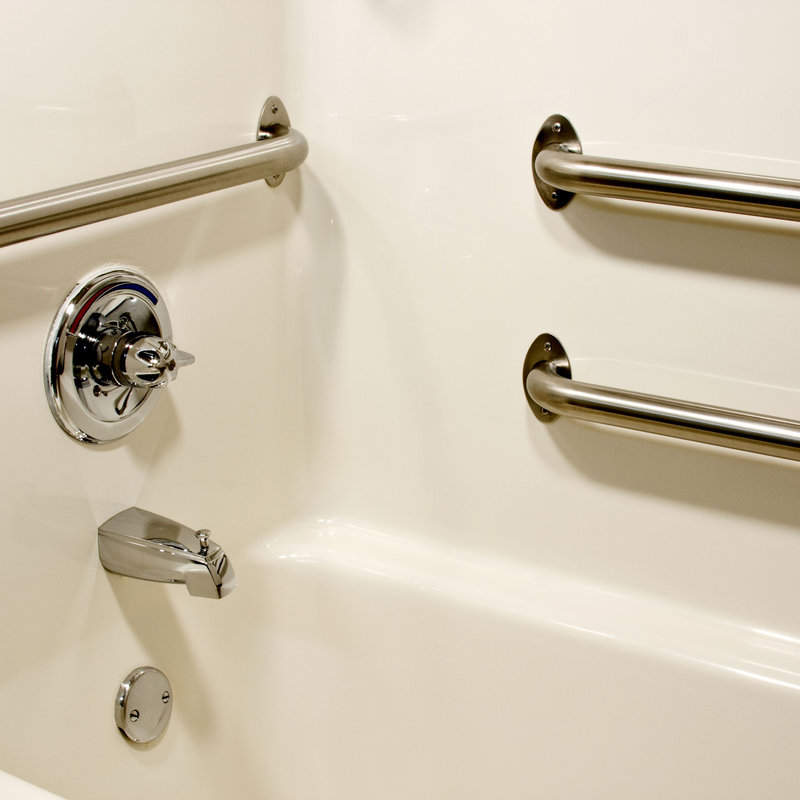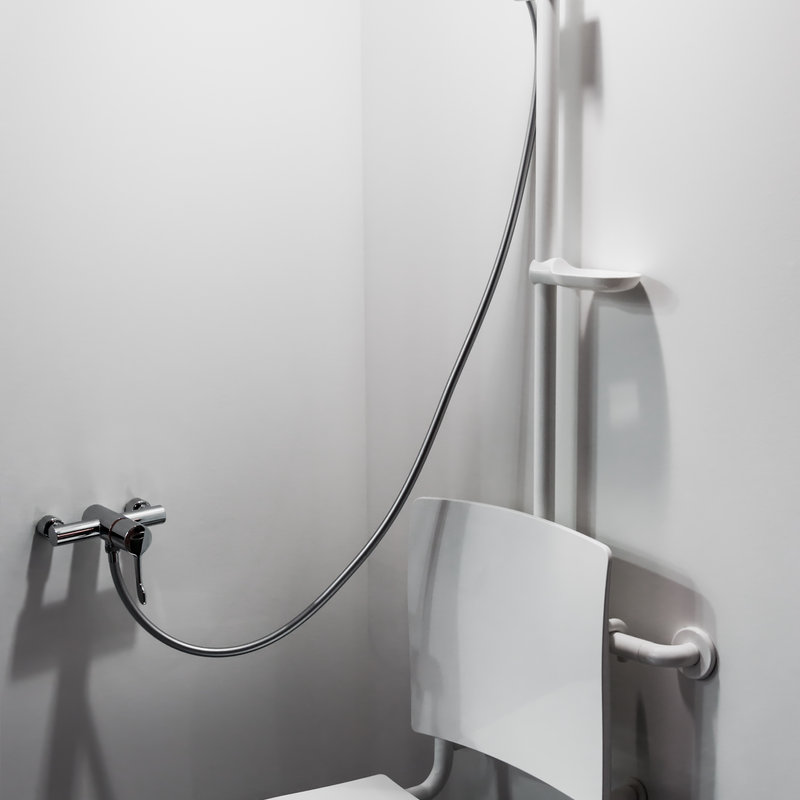
What is a handicap-accessible shower?
Whether it is a physical disability caused by an accident, a birth defect, or the natural aging process, a handicap shower can be a blessing for many Americans. In the past, these were only found in hospitals and rehabilitation centers, and were typically very medical-looking fixtures, though that has changed a lot in recent years.
The Americans with Disabilities Act has established the guidelines for handicap showers accessible design standards. So, what are the guidelines for an accessible handicap shower? Accessible handicap showers must have the following:
- A shower spray set up a wall-mounted unit that must have a hose at a maximum of 48 inches from the floor and is 59 inches long.
- The shower spray setup must be useable as a showerhead or a handheld sprayer
- An accessible handicap shower must have an opening 30 inches wide by 60 inches deep and 60” wide entry for wheelchair accessibility
- The threshold is no higher than half an inch
- Handicap shower bar installation should be no lower than 33 inches and no higher than 36 inches above the floor for adult use
- Grabs for children no lower than 18 inches and no higher than 27 inches from the floor
What does a handicap shower look like?
ADA compliance is only applicable and required of facilities that are open to the public and people with disabilities need access. This can apply to buildings, elevators, and bathrooms with a handicap shower. If a building isn’t open to the public, it does not have to follow ADA guidelines and standards. This includes private residences whether it is a condominium or a single-family home.
That doesn’t mean you can’t have a disability-accessible bathroom with a handicap shower though. You can still follow ADA compliance guidelines and today, an accessible handicap shower can be stylish, blending into your home’s décor.
Architects and designers for private residences have no limit in making a home ADA compatible and still maintain a design of beauty. The required handicap shower requirements accessibility does not come into consideration when a personal home is being designed. If they meet the personal abilities, there isn’t any requirement to the shower size, yet the many different handicap shower options are still available as desired or needed.
What are the handicap shower options?
There are three ways for a shower to be designed and installed:
- Over the bath
- Within a shower cubicle
- A walk-in shower
The following factors should be considered when choosing a handicap shower setup for your home:
- The physical abilities of the person for whom the shower is designed.
- How long can they stand?
- Can they lift their legs over the bathtub side?
- Can they reach the controls?
- The bathroom size and space availability for the shower.
- The budget for the handicap shower installation.
When choosing a handicap shower, think long-term as well as for the present. If the person that the shower is to accommodate in a deteriorating health situation? Are they able to step over the bathtub now, will they be able to do so in a year, three years, or longer?
What is a good size for a handicap shower?
For a handicap shower where a transfer seat will be used, a 69” width is recommended. If the handicap shower will be used for a person in a wheelchair, a 60” width is recommended. This allows them to turn around inside the shower and for assistance.
Another option to consider is a walk-in tub. They provide easier access so the user can walk into the tub, excluding the need to climb over the bathtub side, making a safer entry and exit.

In Conclusion
Living with and supporting a handicapped individual can be costly. A handicap shower installation is not an inexpensive investment, and financial help would ease that expense, So, the first question is typical, will Medicare pay for a handicap shower? In most cases, not in most cases, however, not every situation can be compared to others. In general, handicap showers and walk-in bathtubs are not considered durable medical equipment by Medicare. Going through the process of getting a prescription by a medical professional and filing for reimbursement is always recommended.
